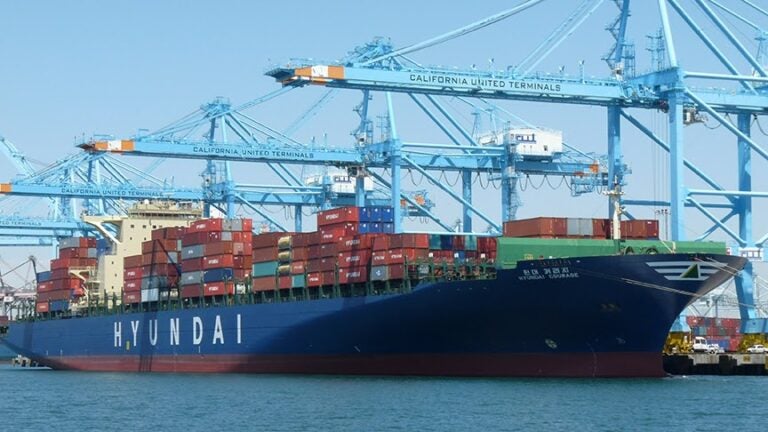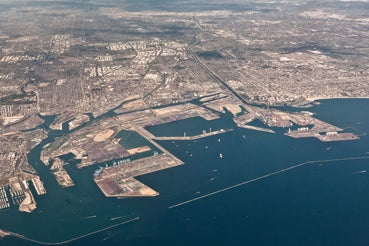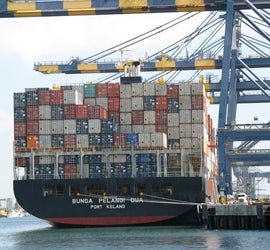
Methanol Shows Great Potential as an Alternative Maritime Fuel
Air emissions from seagoing vessels are an increasing concern for all coastal nations. Here in Southern California, our urban ocean is home to the two busiest seaports in the United States – the twin ports of Los Angeles and Long Beach. As air quality has improved in this region over the past 40 years, the impact of pollution from the marine transportation industry has become more evident because ships do not fall under the same emission reduction rules as other mobile sources of emissions such as trucks, cars, and locomotives.
In 2015, a new Emission Control Area (ECA) designated by the International Maritime Organisation (IMO) went into effect covering the coastal waters in the United States and Canada and extending to 200 nautical miles at sea. The goal is to reduce emissions of nitrogen oxides by 70%. Within the ECA, diesel powered vessels (virtually all seagoing vessels are diesel powered) are required to operate with either ultra-low sulfur fuel, such as liquefied natural gas (LNG), or with stack scrubbers to reduce the sulfur content of their exhaust. The practical effect is that vessels will be using ultra-low sulfur fuel that is more than twice the price of their normal heavy fuel oil. These factors have helped inspire research into more efficient and cost effective alternative maritime fuels.
One promising option is methanol. It is a cleaner burning fuel then LNG, emitting no sulfur dioxide or particulates (two of the six air pollutants that are measured by the Environmental Protection Agency). Methanol can be carried in existing shipboard fuel tanks and burned in existing engines after relatively modest modifications. It is also likely to be cheaper than other diesel fuels.
“Methanol shows great potential to meet new IMO emission standards,” says Dr. James Fawcett, director of marine science and policy outreach at USC Sea Grant.
The evolution of maritime fuels will take time. Stena Lines, operating in the Baltic, is currently using methanol within the region’s ECA and has plans to convert 20 ferries to methanol. However, current drawbacks to using methanol more broadly revolve around the cost of existing fuel (less expensive than in the past), limited availability of methanol along shipping routes (due to low demand), and technology advancements needed onboard vessels – methanol absorbs water that may corrode engine parts, so fuel systems need adequate de-watering technology.


USC Sea Grant has worked on marine shipping issues for more than a decade as a neutral source of information and expertise on port security, business continuity, port planning, and air pollution. In 2014, in collaboration with the USC Loker Hydrocarbon Research Institute, we hosted the Symposium on the Evolution of Maritime fuels, Ship Speed and Operational Efficiency at USC. The symposium brought together international experts in marine fuels to explore options for alternative fuels that are efficient, less polluting and less expensive than either ultra-low sulfur fuel or heavy fuel oil. Methanol emerged as a leading alternative. Additionally, the USC Loker Hydrocarbon Research Institute has developed potential sustainable sources of methanol (hint: converting carbon dioxide!) and a model for generating and using methanol in a sustainable way.
Moving forward, the main issue of advancing methanol as a cleaner, more efficient fuel is going to be cost. Which technology can produce methanol at a reasonable market price and in sufficient quantities to meet the demands of various industries? Experts and academia continue to express interest and enthusiasm for methanol and Dr. Fawcett continues outreach on methanol as an alternative maritime fuel through lectures in Asia and the United States. For more resources about methanol, please visit http://www.methanol.org/